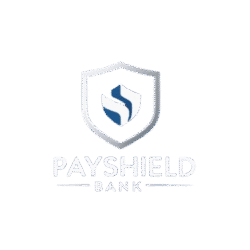Opening a bank account in the U.S. as a non-citizen may seem challenging—but it’s very possible with the right documents, guidance, and banking partner. Whether you’re an international student, expat, digital nomad, or someone working on a visa, this guide will walk you through how to legally and efficiently open a U.S. bank account without citizenship.
🌍 Why Non-US Citizens Open Bank Accounts
Non-U.S. citizens commonly open bank accounts in the U.S. for:
Receiving salary or freelance payments
Paying rent, bills, or tuition
Saving money securely in U.S. dollars
Making online purchases or international transfers
Building a U.S. credit history (for eligible applicants)
✅ Can a Non-US Citizen Open a Bank Account?
Yes. Most major U.S. banks and digital banking platforms allow non-citizens to open an account, provided you can verify your identity and immigration status. You do not need to be a U.S. citizen or green card holder to open a basic checking or savings account.
📋 What You’ll Need: Required Documents
Here are the typical documents needed for non-citizens:
1. Valid Passport
Your passport must be current and in good condition.
2. Visa or Immigration Documents
Depending on your visa type (e.g. F-1, H-1B, L-1, B1/B2), you may need to show your visa and/or Form I-94.
3. U.S. Address Proof
Banks require a U.S. residential address. You can usually use:
Lease/rental agreement
Utility bill
Letter from your school/employer
Some banks may accept a letter from a university (for students) or hotel/temporary housing with explanation.
4. Tax Identification Number
Social Security Number (SSN) – if you have one
Individual Taxpayer Identification Number (ITIN) – if you don’t have an SSN
💡 Some banks may let you open a basic account without an SSN/ITIN, especially in person.
🏦 Where to Open an Account
Here are your main options:
🔹 1. Traditional U.S. Banks
Examples: Chase, Bank of America, Wells Fargo, Citibank
Pros: In-person support, ATM network
Cons: Strict documentation, may need SSN/ITIN
🔹 2. Online-Only Banks & Fintechs
Examples: Wise, Revolut, Chime, Monzo (U.S.), N26
Pros: Fast setup, fewer requirements, global transfers
Cons: Some may not offer full features like checkbooks
🔹 3. International Banks With U.S. Branches
Examples: HSBC, Santander, TD Bank
Great for customers who already bank internationally or plan to move money across borders.
🪜 Step-by-Step: How to Open Your Account
Research Banks – Choose one that supports non-resident applicants
Gather Documents – Have your passport, visa, U.S. address proof, and ITIN (if available)
Apply Online or In Person – Online is fast, but some banks may require in-person visit
Fund Your Account – Deposit an initial amount (varies by bank)
Activate Online Banking – Set up mobile banking and cards
Optional: Request Debit/Credit Cards – Physical or virtual
🛡️ Tips for Success
Call the Bank First – Not all branches follow the same rules. Ask what’s required.
Use a Trusted U.S. Address – Even if temporary, it must be verifiable.
Start with a Checking Account – It’s easier to open than credit accounts.
Ask About Monthly Fees – Choose an account with no or low maintenance fees.
Build Credit Later – After opening an account, you may qualify for secured credit cards.
🧾 What If You Don’t Have an SSN or ITIN?
Some banks and fintechs allow you to open a bank account with:
Passport + Visa
Foreign driver’s license or national ID (in addition)
Proof of residence in the U.S.
You can also apply for an ITIN through the IRS using Form W-7. Payshield Bank (or your bank) may help guide you through this if needed.
✨ Final Thoughts
Opening a U.S. bank account as a non-citizen is more accessible than ever—especially with the rise of digital banking. The key is to be prepared, choose the right bank, and understand your visa/residency status.
At Payshield Bank, we’re working to make borderless banking a reality for everyone. Whether you’re an international student, remote worker, or expat, we’re here to help you open and manage your U.S. account with ease.



Leave A Comment